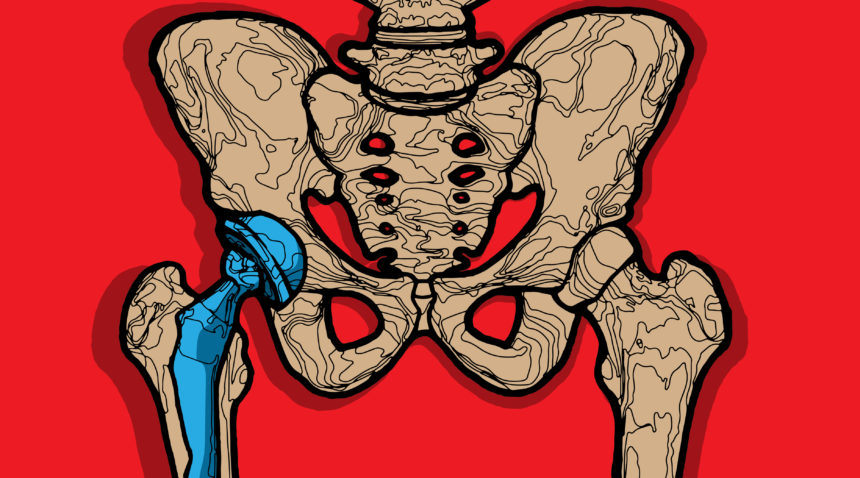When you think of a patient who has knee or hip replacement surgery, you might imagine a grandmother or grandfather walking with a cane or walker. It’s time to alter that perception.
Research shows that more people than ever are getting joint replacement surgery, and these patients are getting younger, too; about 7 million Americans are living with a hip or knee replacement. (Shoulders, elbows and wrists can also be replaced, but these are less common procedures.)
Total joint replacement surgery removes parts of damaged joints and replaces them with metal, plastic or ceramic devices intended to replicate the movement of a healthy joint.
Implants today can last multiple decades, with hip replacements typically lasting longer than knee replacements, says David McNabb, MD, of Raleigh Orthopaedic Clinic. Dr. McNabb performs around 300 joint replacement surgeries every year, mainly hips and knees.
In the 1960s and 1970s, metal and plastic parts were commonly used for joint replacements. Today, the medical-grade plastic components are much more resistant to wear, which has substantially improved the longevity of the replacement parts. Other than plastic, implants today are typically titanium or ceramic.
“Replacements are lasting longer than anticipated,” Dr. McNabb says. “At this point, it’s viable to put implants in younger patients than what was historically the norm 20 years ago.”
There are other trends in joint replacement besides younger patients. Anesthesia has evolved, with many patients today receiving spinal rather than general anesthesia. After surgery, narcotic pain medication is being used less in favor of anti-inflammatories and other medications.
Patients are spending less time in the hospital, too; today, at UNC REX Healthcare, patients stay in the hospital on average 1.8 days after surgery; a recent British study said that joint replacement patients in the 1990s stayed in the hospital an average of 14 to 16 days.
The goal of joint replacement surgery is to relieve and control pain in the joints and subsequently help patients return to an active lifestyle. During the initial clinic visit, a clinical exam and X-ray are used to diagnose advanced arthritis in a joint. Before recommending surgery, activity modification is suggested. Oral inflammatory medications might be prescribed or the doctor may inject the joint with corticosteroids. When none of those options provide long-term relief, joint replacement is considered.
At UNC REX Healthcare, patients participate in a preoperative education class to get ready for surgery and to meet with an anesthesiologist.
UNC REX Healthcare is a high volume joint replacement center and has been recognized as a Blue Distinction Center+ for knee and hip replacement surgery by BlueCross BlueShield. UNC REX is also ranked No. 4 in the country for having the lowest readmission rates within 30 days of discharge for knee and hip replacement patients.
Some pain is to be expected after joint replacement surgery, but Dr. McNabb works to stay ahead of the pain as much as possible by using a preemptive regimented schedule of pain medication the first few days after surgery. Most patients begin working with a physical therapist immediately after surgery, often on the same day.
Find out more about joint replacement surgery at UNC REX Healthcare.

